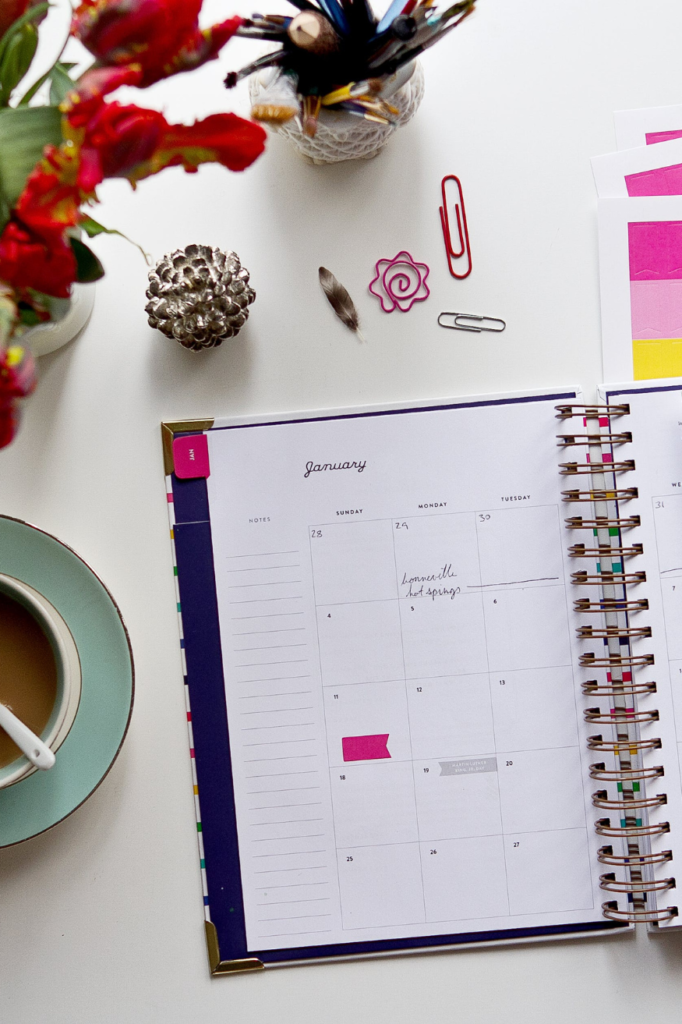Did you know…
That the average employee takes seven days off sick each year, of which 40 percent are for mental health problems? Totalling 70 million lost working days a year, one in seven is caused directly by work or working conditions.
Granted, mental ill health stems from inside and outside work and the learning environment. Things like home life, family history, caregiving duties, short-term illnesses, chronic health conditions, and bereavement all contribute. However, the statistic that one in seven lost working days deriving from work itself or working conditions is upsetting.
Considering work makes up a third of our lifetime, work and learning environments should be happy, supportive, and rewarding places to thrive in.

Types of mental ill health at work or places of learning
The most common mental ill health disorders that we take sick leave for include:
- Stress – unlike temporary stress, continuous stress seriously affects emotions, behaviour, ability to think, and our physical being, like blood pressure, increased heart rate, muscle tension, and insomnia.
- Anxiety – becomes a problem when things overwhelm and interfere with everyday life over time. Physical symptoms include panic attacks triggered by persistent worrying thoughts, faster heartbeat, dizziness, nausea, and difficulty breathing.
- Mental ill health is also linked to depressive and destructive activities. Things like excessive drinking, gambling, causing fights, and obsessive food and drink habits. These are, in fact, coping mechanisms to relieve distress and deal with life difficulties.
What creates stress, anxiety & mental ill health in us?
Cortisol, otherwise known as the stress hormone, causes us stress, anxiety, and mental ill health.
Cortisol elevates with intense anxiety or stress but can lower when we are relaxed.
Over time, long-term stress and anxiety is detrimental to health and well-being. So it is vital to maintain balanced cortisol levels and release as much of it as possible when heightened.
What creates mental ill health at work or learning environments
- Inadequate or absence of health and safety policies resulting in unidentified and unresolved issues
- Poor communication lines, no direction from the manager, and lack of support and guidance
- Poor pastoral care and management style, unclear definition of role and responsibilities, reporting lines, and tasks and objectives. Insufficient resources are provided to support workers effectively

- Limited opportunities for participation and inability to control own workloads
- Inflexible working hours
- Inappropriate task delegation against job description, coupled with inadequate support and training
- High unrelenting workload
- Unfair distribution of group work
- Bullying and psychological harassment
Effects of mental ill health at work or places of learning
Mental ill health makes it difficult for a person experiencing it to go to work or study. They may be stressed and anxious just thinking about it and struggle to prepare for the working or learning day ahead.
They may run late often and struggle to complete tasks. Mood may be affected, and while they can be quieter than usual, there may also be moments of being short-tempered or teary.
They’re often distracted with other thoughts, worries, and anxieties and may leave work or studies early.
There may be more sick days.
Poor mental health affects concentration and stress levels. Sufferers withdraw from classes and meetings or disrupt colleagues / peers from work and learning.
If the problem goes unnoticed or unaddressed hostility builds. This is detrimental for the person experiencing poor mental health and damaging for peers, colleagues, the organisation, and its reputation.
While mental ill health impacts all areas of someone’s life, including personal relationships and day-to-day living, there are things that can and should be done at work or places of study to support poor mental health.
How to overcome poor mental health at work or learning environments

Through training, reading, and research, I have learned that we can do many things to reduce our cortisol, also known as the stress hormone.
To tackle poor mental health, it’s about getting cortisol and/or the negative thoughts associated with stress out of our brain-body system.
At work or our place of learning, we can get cortisol and/or the negative thoughts associated with stress and anxiety out of our brain-body system by taking positive and proactive action.
Positive action is better than letting unresolved issues fester and stress hormones mount in our brain-body system.
By taking action, we drive the release of cortisol and lead the way in tackling our mental ill health at work or in the study environment.
A two-stage process
Based on personal experience, training, and research, I suggest the following:
- The first step is to recognise and acknowledge that you are in fact experiencing unusual, burdensome feelings or negative physical effects in relation to work or your place of study. The most common mental ill health disorders that we take sick leave for are stress and anxiety. So, even if you don’t think you’re suffering poor mental health but feeling stressed and anxious about work or study, book an appointment with a GP. It’s what I did when I felt my physical health deteriorate. What I thought I was seeing my GP for – chronic asthma – turned into a diagnosis of physical, mental, and emotional ill health. I learned that the strains and difficulties endured at work coupled with personal life pressures were aggravating my asthma and making me ill, mentally and emotionally. Fully burnt out, I was given the option of being signed off work on medical grounds for a period of time or requesting work adjustments from my employer. I opted for the latter.
- The second step is to consult with trusted parties at work or your place of learning and get a realistic plan, tailored to you, in place. To do this, use the following plan of action and six tips to guide you:
Identify positive relationships
Being in a negative (work or learning) environment, with no positive relationships, for extended periods is harmful. It isolates people, reduces motivation levels, and leads to low morale. This goes on to impact work and learning productivity. Therefore, identifying positive relationships and trustworthy people to support you is crucial. They could be managers, workplace mentors, buddies, tutors, first aiders, welfare staff, or HR colleagues. ACAS (Advisory, Conciliation, and Arbitration Service) helps with more sensitive conversations.
Communication is key
Talking helps to overcome poor mental health. Granted, these may be difficult and embarrassing to start. But, from experience, once you open up to someone you trust, you’ll feel empowered. It’s likely the person has been through or is experiencing something similar to you. By talking and sharing, you’ll feel supported, less alone, and gain advice for the concerns you’re experiencing.
A time to talk
Your trusted colleague should know that the discussion you want to have is serious and important. So don’t land the conversation on them without notice. Choose somewhere private to chat, in a quiet area, perhaps away from the work or learning environment, where you won’t be overheard or interrupted. Be honest about your concerns, feelings, and any ideas you have about how to fix the issues. Leading a proactive conversation will help you tackle mental ill health at work and in study environments.
Be specific
Pinpoint the exact issues making you stressed and anxious at work or your place of learning. Having specific examples give the best chance to address your problems. Is it poor pastoral care and line management style? Is it inappropriate task delegation against your job description with inadequate resources and training? Perhaps it is inflexible working hours and unrelenting workloads with little or no support.
A Person-Centred Approach (PCA)
Alongside specific issues, note the support you need to help you overcome poor mental health. Maybe it’s re-prioritising or reducing workloads? Extra rest breaks, reduced hours, or longer lead-in times? Flexible working arrangements or space? Mediated meetings for conflict resolution or occupational health appointments? Funded training or team resources? Greater control and decision-making over projects or learning? Or, joining a staff network or support group with like-minded people.

This story about simple workplace accommodations from Alex Partridge, Founder of UNILAD and LADBible, is inspiring.
A Wellness Action Plan
Once conversations are underway and you start receiving support to combat mental ill health, request a Wellness Action Plan. A confidential document that is agreed between your employer / education provider and you to identify the things that will protect your mental health and well-being.
Every employee should have one whether or not they’re experiencing mental health problems. A wellness action plan can be integrated into regular one-to-one meetings and performance appraisals. This ensures that specific actions agreed between you and your employer / education provider to care for your health and well-being are in place, documented, monitored, and updated.
Learn how to write and actively use a Wellness Action Plan.
Tackling poor mental health more generally
Long-term stress and anxiety can be detrimental to our physical and mental health. Cortisol, otherwise known as the stress hormone, is elevated when we experience heightened anxiety or stress and lowered when we’re relaxed. Because of this, it’s essential to maintain a good balance of cortisol for our health and well-being.
Through experience, training, reading and research, I’ve learned effective ways to tackle poor mental health, stress, and anxiety. The best way is to release as much cortisol and/or the negative thoughts associated with stress out of my brain-body system as possible.
Physical exercise
Allows us to literally sweat excess cortisol out from the body. For this, I do Hot Yoga. During autumn and winter, when days are short – and Seasonal Affective Disorder (SAD) kicks in – go for a brisk walk or run. Embracing nature and soaking up vitamin D helps release and rebalance cortisol.
Journalling
Helps us write out the stresses and anxieties in our heads and release cortisol. Research shows that bottling things up in our heads and minds, letting them go round and round, is unhealthy.
Speaking it out loud
Speaking to a therapist or trusted friend is cathartic and actively lowers cortisol levels.
Sleep it off
Neuroscientists cannot advocate enough the importance of sleep for the brain.
Given the choice, try sleeping for 8 hours and 15 minutes a night.
This optimum sleep window allows the mind to rest, cells to regenerate, and the full cleansing cycle of the brain.

Contrary to what we traditionally thought was happening in our brains during sleep, brain cleaning takes 8 hours and involves active jet-like flushing out (not dripping) of toxins.
For poor sleepers with interrupted sleep, side sleeping is a better position for the neck veins and flushing out toxins from the brain. Upon waking, simply turn yourself onto your side and let the cleaning ensue!
A process to achieve optimum health & well-being
Change happens relatively quickly when we adjust our lifestyle, thought processes, and outlook. But to maintain wellness and keep mental ill health at bay, we must sustain changes in how we live and think.
Of course, reality is we are only human and cannot always be strong. It is perfectly normal to experience bad moments from time to time. My advice is to revisit steps 1 and 2 in the recommended two-stage process.
Because tackling mental ill health is a journey and a process, I will keep posting on this topic.
Meanwhile, check this blog for tips on how to write and actively use a Wellness Action Plan.



